Bringing home a new baby is one of life’s greatest joys, but learning how to prepare your child for a new baby can feel overwhelming for parents. As both a mother of three boys and a newborn photographer who has witnessed countless family transitions, I’ve learned that knowing how to prepare your child for a new baby is absolutely everything when it comes to helping your older child adjust to their new role as a big sibling.
When my second son was born, my curious three-year-old surprised everyone at our 20-week ultrasound by confidently telling the doctor that “the baby isn’t in Mommy’s belly, it’s in her uterus.” He’s always been the type of child who needs to understand everything in advance, and honestly, most children thrive when they know what to expect. No one likes walking into new situations completely blind, especially when it comes to something as life-changing as welcoming a new family member.
Whether you’re planning a hospital birth, home birth, or aren’t sure what to expect, these ten strategies will help your child feel prepared, involved, and excited about becoming a big brother or sister.
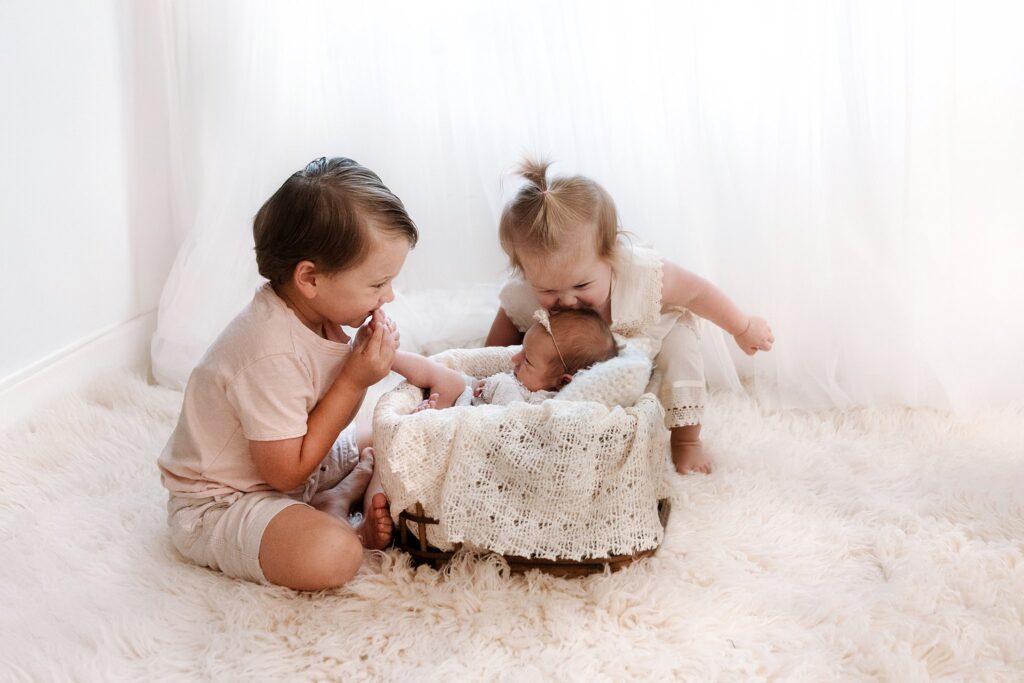
Why Learning How to Prepare Your Child for a New Baby Matters
The transition from only child to big sibling can be challenging. In my photography studio, I’ve seen families where older children struggle with jealousy, regression, and behavioral changes when parents didn’t know how to prepare their child for a new baby effectively. However, families who invest time in learning how to prepare their child for a new baby often have smoother transitions and more positive sibling relationships from day one.
Research from the American Academy of Pediatrics shows that children who are prepared for major life changes experience less anxiety and adapt more quickly. This is especially true for the arrival of a new baby, which completely changes family dynamics.
10 Expert Strategies: How to Prepare Your Child for a New Baby
1. Read Books Together About New Babies
Visit your local library and check out books about becoming a big sibling. Some of our family favorites include:
- “Mama Midwife” by Chie Nishikawa
- “Hello Baby” by Lizzy Rockwell
- “The Baby Tree” by Sophie Blackall
- “It’s Not The Stork” by Robie Harris (better for ages 4+)
Pro Tip: As a photographer, I always encourage families to read together during maternity sessions. These quiet moments make beautiful images and help reinforce the excitement about the new baby. When you’re figuring out how to prepare your child for a new baby, books provide a gentle introduction to the concept.
2. Include Them in Prenatal Appointments
When possible, bring your child to doctor or midwife appointments. Let them hear the baby’s heartbeat, help measure your belly, and see ultrasound images.
Why This Works: This helps make the pregnancy feel real to your child, especially since they can’t physically see the baby growing. For families planning home births, it’s also valuable for children to meet the midwives or doulas who will be present during delivery. This hands-on approach is essential when learning how to prepare your child for a new baby.
3. Involve Them in Baby Name Discussions
Start conversations about potential baby names and ask your older child to guess the baby’s gender. This gives them a sense of involvement and often produces hilarious quotes worth documenting. My firstborn once told me we were going to “throw the baby away and then have tea” – definitely one for the baby book! These conversations are a fun part of how to prepare your child for a new baby while creating lasting memories.
4. Show Them Their Own Baby Photos
Pull out photo albums or create a slideshow showing your older child as a newborn. Children love looking at pictures of themselves, and it helps them understand that they were once tiny babies too.
Professional Insight: If you have birth photography or professional newborn photos, these are especially powerful. They help children visualize what their new sibling might look like and understand the birth process as natural and beautiful. Visual aids are incredibly effective when determining how to prepare your child for a new baby.
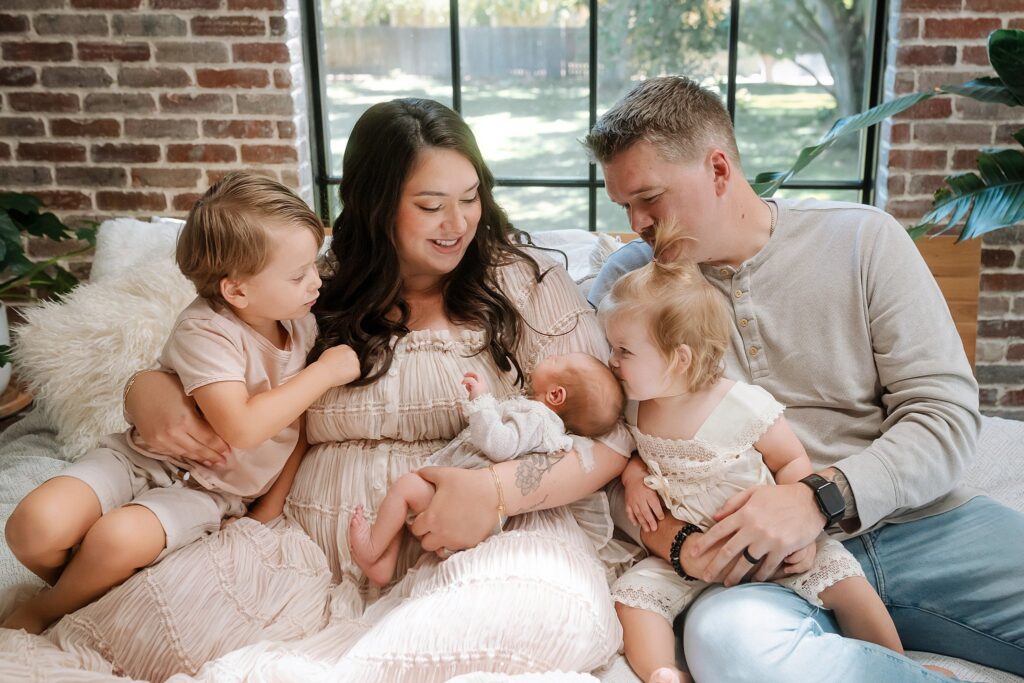
5. Discuss Who Will Be Present During Birth
For Hospital Births: Talk about who will care for them while you’re at the hospital. Will grandparents come? Will they visit the hospital?
For Home Births: Explain who will be coming to your house and what their roles are. We’ve used this as an opportunity to teach about calling 911 in emergencies and what would happen if we needed to go to the hospital unexpectedly.
Regardless of where you have your baby it’s important to include them in the planning. When toddlers know who will take care of them and what’s happening, they feel much more secure about the whole experience.
6. Watch Age-Appropriate Birth Videos Together
Important: Preview videos first! Look for gentle, positive birth stories that show the joy when baby arrives. The Bradley Method offers excellent resources for family-friendly birth education. Start with videos without sound, then add audio once your child is comfortable with the visuals.
This helps children understand that while birth involves some intensity, it ends with celebration and relief. Educational videos are valuable tools when considering how to prepare your child for a new baby.
7. Practice Labor Sounds Together
This might sound silly, but it’s incredibly helpful! Labor involves vocalizations, and if your child will be home during any part of labor, they should know what to expect. Make it fun by practicing different “labor sounds” together – they’ll think it’s hilarious while learning something important. This playful approach makes learning how to prepare your child for a new baby less intimidating.
8. Create a Special “Big Sibling Kit”
DIY Kit Ideas:
- Flashlight and magnifying glass for “examining” baby
- Soft measuring tape
- Child-safe thermometer
- Noise-canceling headphones and charged devices
- Special snacks and juice boxes
- New books about being a big sibling
- Their own baby doll to care for
Pro Tip: Even for hospital births, bring a version of this kit when older siblings visit. It gives them something special to do and helps them feel important rather than left out. A special kit can be a game-changer for helping your child feel prepared and excited about their new role as big sibling.
9. Follow Your Child’s Lead
Respect Their Feelings: Some children want to be heavily involved, others need space. Don’t force participation in holding the baby or specific activities. Understanding your child’s personality is key when figuring out how to prepare your child for a new baby.
Age Considerations: A five-year-old might want to choose whether to be present during birth, while a two-year-old needs the decision made for them based on safety and practical considerations.
Ask questions like: “Do you want to watch a show while baby is born or go to the park with grandma?” This gives them some control while keeping expectations realistic.
10. Plan Special Gifts
For Big Sibling: Choose something that will entertain them during those early weeks when you’re exhausted. Consider inexpensive items such as:
- Sticker books or activity sets
- Lego kits appropriate for their age
- Art supplies (think crayons, not paint!)
- Special snacks they can access independently
From Baby to Big Sibling: Have the older child choose a lovey or small toy “from” the baby. When baby cries, they can bring their special item to help soothe their new sibling. Gift planning is a great way to help your child get excited for a new baby.
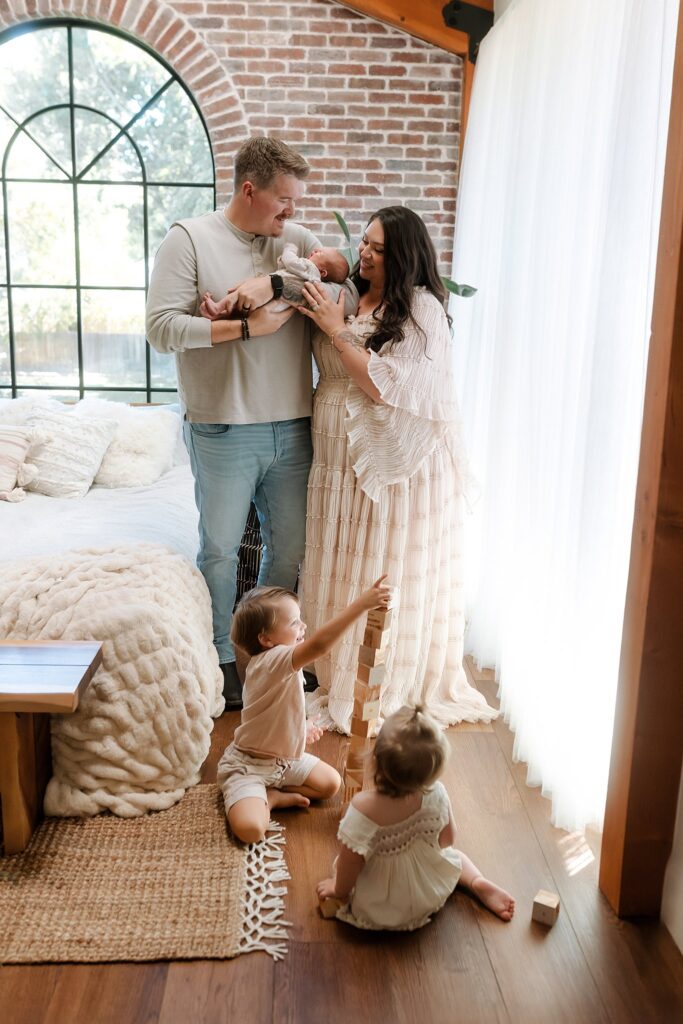

What to Expect After Baby Arrives: How to Prepare Your Child for New Baby Challenges
Even with perfect preparation, expect some regression and challenging behavior from your older child. Understanding how to prepare your child for a new baby includes setting realistic expectations for the adjustment period. Potty training might backslide, whining may increase, and they might want to “be the baby” themselves. This is completely normal and usually temporary.
In my experience photographing families with newborns, the most successful transitions happen when parents:
- Maintain realistic expectations
- Give individual attention to older children
- Celebrate small positive interactions between siblings
- Document the journey with photos (even the challenging moments make meaningful memories later)
The Child Mind Institute provides excellent resources for understanding normal childhood development during major transitions.
When to Consider Professional Help
DIY vs Professional Photography: While you can certainly take your own photos of this transition, professional newborn photography offers several advantages:
- Experience posing older siblings safely with newborns
- Patience during emotional or difficult moments
- Ability to capture genuine interactions while parents focus on children’s needs
- Expertise in creating beautiful family portraits that include everyone
Safety First: Whether you’re taking photos yourself or working with a professional, never expect a toddler to safely hold a newborn unassisted. A two-year-old simply doesn’t have the motor skills or understanding to support a baby’s head and neck properly. If you’re DIYing family photos, always have an extra set of helping hands ready to support both children.
Professional photographers have techniques to create those dreamy “big sibling holding baby” shots safely. We often use composite photography – taking separate images and blending them together – to give you that beautiful image you’re craving without putting either child at risk. The result looks completely natural, but both children were safe throughout the entire process.
Most families find that professional photos during this transition become some of their most treasured images. If you’re in the Boise area, consider checking out our family photography services or browse our newborn gallery for inspiration.
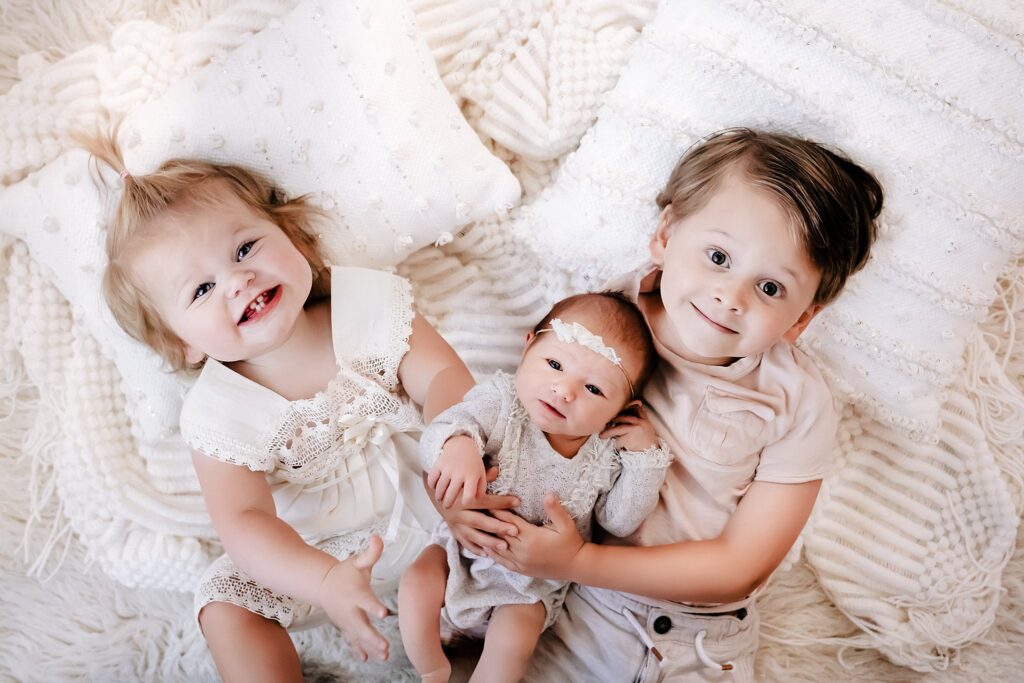
Creating Lasting Memories of This Transition
As both a mother and photographer, I can’t stress enough how quickly this phase passes. The adjustment period is intense but brief, and soon you’ll have two children who love each other deeply (even when they’re fighting over toys).
Document this journey – the preparation, the anticipation, and especially those first meetings between siblings. These photos become family treasures that tell the story of how your family grew.
Final Thoughts on How to Prepare Your Child for a New Baby
Learning how to prepare your child for a new baby takes intention and patience, but the investment pays off tremendously. I can’t promise it will eliminate all the challenges (hello, toddler regression!), but involving your child in the preparation really seems to help them feel more positive about the whole experience.
Remember that every child is different. What works for one family might need adjustment for another. Trust your instincts, stay flexible, and don’t hesitate to ask for help when you need it.
Whether you’re documenting this journey yourself or working with a professional photographer, make sure to capture not just the destination (your beautiful new family of four, five, or more) but also the journey of getting there. These preparation moments are just as precious as the first photos with your newborn.
Ready to document your growing family? Contact us to discuss newborn photography that celebrates every member of your family, from tiny newborns to proud big siblings. We specialize in creating beautiful, stress-free sessions that honor this special time in your family’s story. Our experience with how to prepare your child for a new baby extends to creating comfortable photography experiences for the whole family.
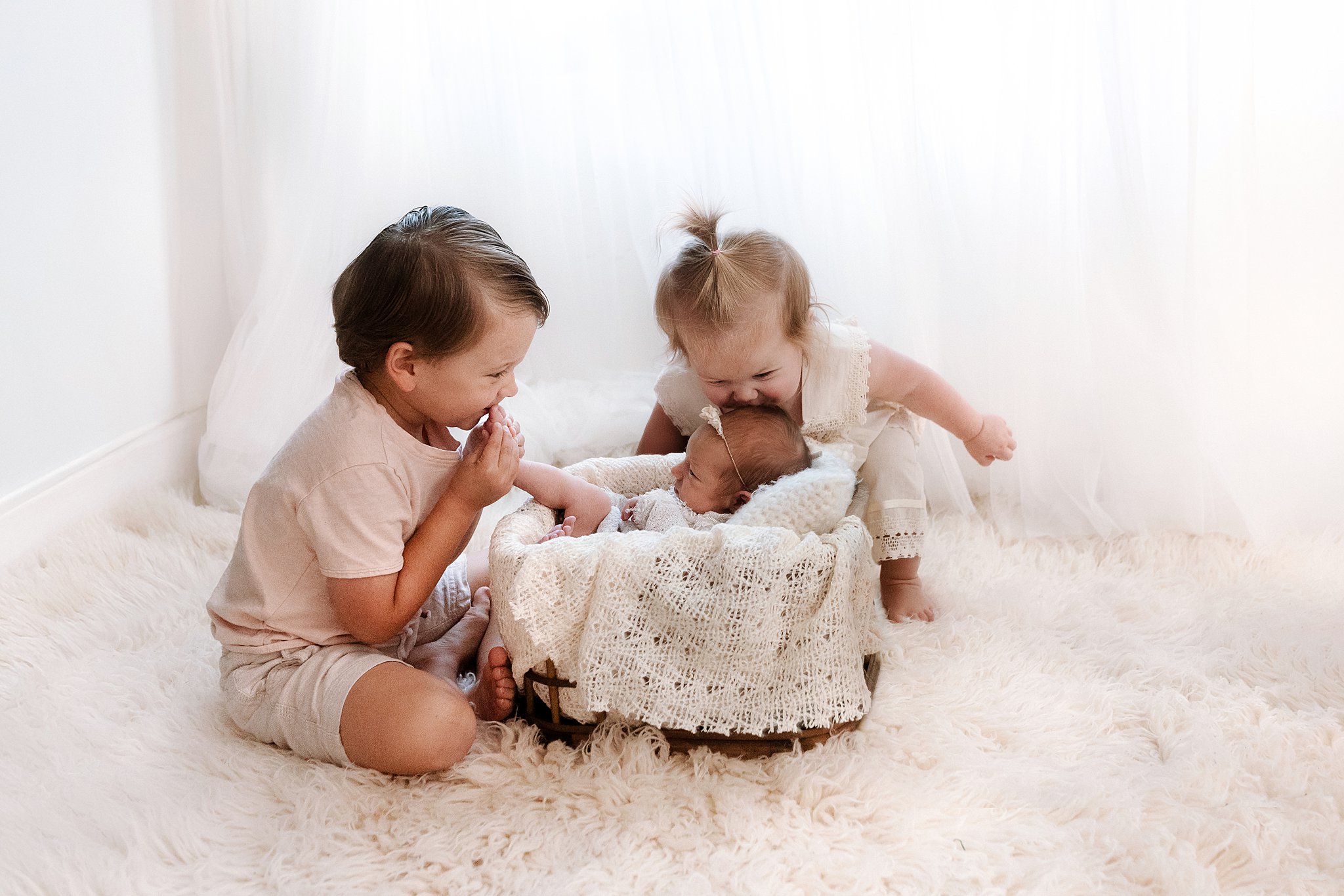
LEAVE A COMMENT
Comments